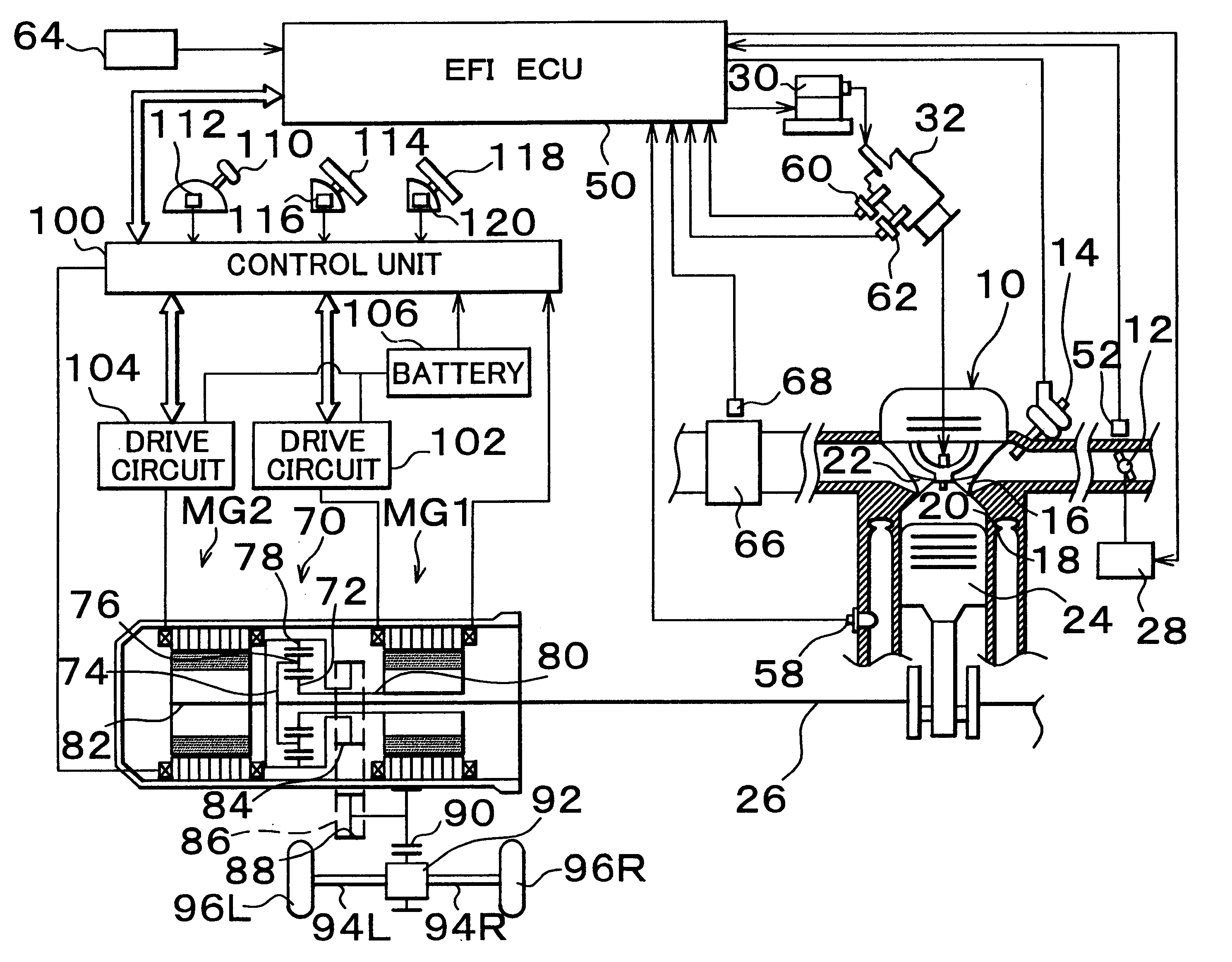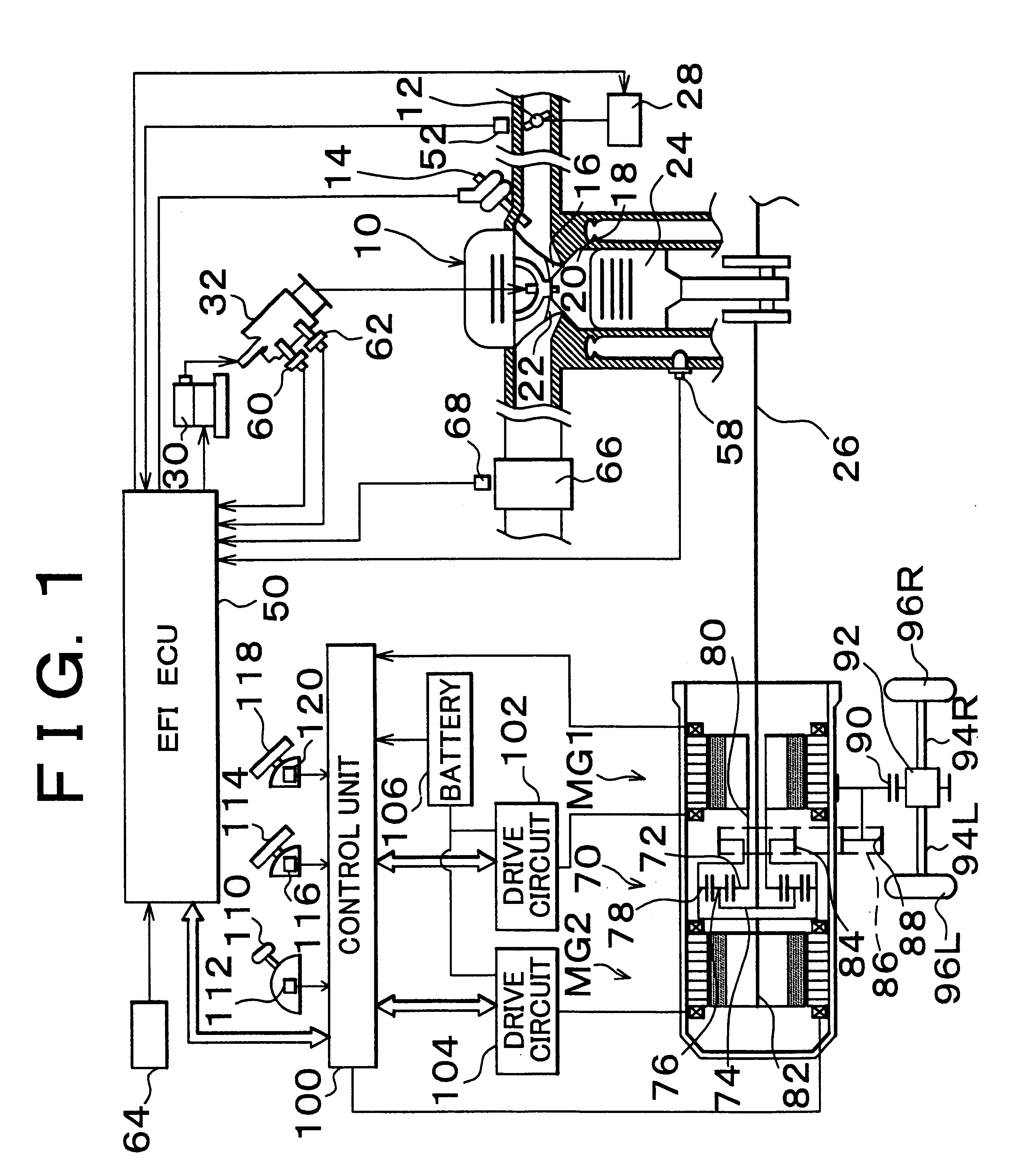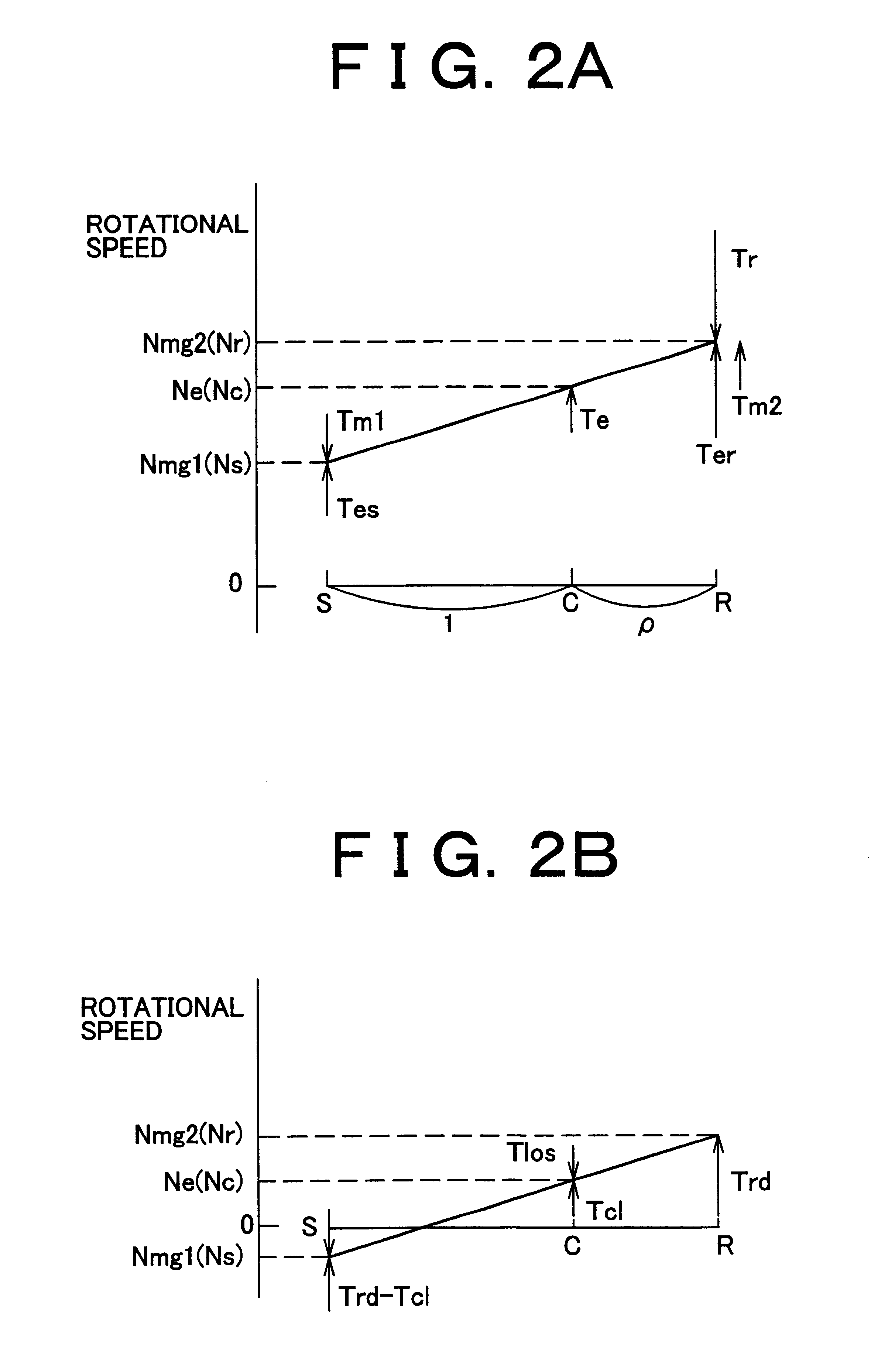Control apparatus and control method for motor vehicle
a technology of control apparatus and motor vehicle, which is applied in the direction of electrical control, hybrid vehicles, non-mechanical valves, etc., can solve the problems of engine rotation, fuel consumption deterioration, and motor regenerative efficiency reduction
- Summary
- Abstract
- Description
- Claims
- Application Information
AI Technical Summary
Problems solved by technology
Method used
Image
Examples
first embodiment
In a first embodiment, if the catalyst temperature sensor 68 (FIG. 1) detects during fuel cut that the temperature Tca of the catalyst 66 is higher than a predetermined temperature Tca1, the actuator 28 opens the throttle valve 12 to increase an amount of intake air. On the other hand, if the temperature Tca of the catalyst 66 has become equal to or lower than the predetermined temperature Tca1, the throttle valve 12 is then closed.
FIG. 3 shows a control flow executed by the EFIECU 50 to realize this control.
It is determined in STEP 202 whether or not fuel supply has been stopped. If fuel supply has not been stopped, the problem of pumping loss does not arise. Thus, operation immediately exits the control flow.
If it is determined that fuel supply has been stopped, operation proceeds to STEP 204 where it is determined whether or not the catalyst temperature Tca is higher than the predetermined temperature Tca1. If the catalyst temperature Tca is higher than the predetermined temperat...
second embodiment
In a second embodiment, during fuel cut, the opening degree TA of the throttle valve 12 is increased and set in accordance with a temperature Tca of the catalyst in the exhaust system.
FIG. 4 shows an exemplary map of temperatures Tca of the catalyst stored in the EIECU 50 to realize this control and opening degrees TA of the throttle valve 12 set in accordance with the catalyst temperatures Tca.
As is apparent from FIG. 4, if the catalyst temperature Tca is lower than a predetermined temperature Tca2, the opening degree TA of the throttle valve 12 is maintained at a value corresponding to its completely closed state. If the catalyst temperature Tca drops below the predetermined temperature Tca2, it tends to be difficult for the catalyst to perform its intrinsic function. To be more specific, the predetermined temperature Tca2 is slightly lower than the predetermined temperature Tca1 of the first embodiment. As the catalyst temperature Tca becomes higher than the predetermined tempera...
third embodiment
In a third embodiment, during fuel cut, the opening degree TA of the throttle valve 12 is increased and exhaust valves of the engine are driven in their closing directions in accordance with a temperature Tca of the catalyst in the exhaust system. Meanwhile, intake valves are kept open to further reduce pumping loss.
In order to realize this control, the third embodiment employs a mechanism capable of keeping the intake and exhaust valves closed and controlling them. A construction capable of freely controlling the opening and closing of the intake and exhaust valves independently of positions of pistons (without depending on positions of the pistons) is known in itself. For example, Japanese Patent Application Laid-Open No. 9-303122 discloses such a construction. In implementing the third embodiment of the invention, the structure for keeping the exhaust valves closed is not specifically limited. Here, one example of the construction will be described.
FIG. 5 is a longitudinal sectio...
PUM
 Login to View More
Login to View More Abstract
Description
Claims
Application Information
 Login to View More
Login to View More - R&D
- Intellectual Property
- Life Sciences
- Materials
- Tech Scout
- Unparalleled Data Quality
- Higher Quality Content
- 60% Fewer Hallucinations
Browse by: Latest US Patents, China's latest patents, Technical Efficacy Thesaurus, Application Domain, Technology Topic, Popular Technical Reports.
© 2025 PatSnap. All rights reserved.Legal|Privacy policy|Modern Slavery Act Transparency Statement|Sitemap|About US| Contact US: help@patsnap.com



